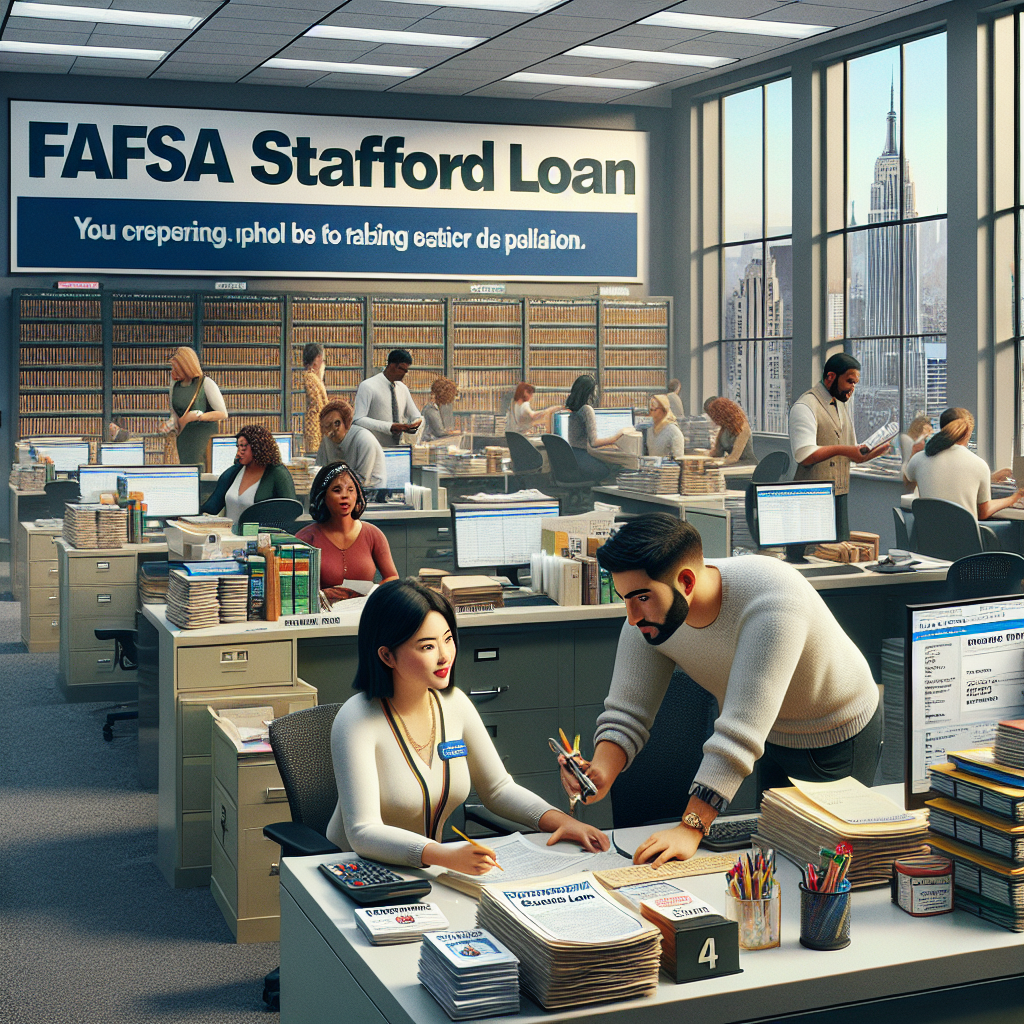
Fafsa stafford loan
Understanding FAFSA and Stafford Loans: A Comprehensive Guide
When it comes to financing education, many students and their families find themselves overwhelmed by the options available. Among these, the FAFSA Stafford loan stands out as a viable solution for many. This blog post aims to demystify this crucial topic by explaining the FAFSA application process, the nature of Stafford loans, and how they can be beneficial for students pursuing higher education.
What is FAFSA?
The Free Application for Federal Student Aid, commonly known as FAFSA, is a form that students fill out to receive financial aid for their education. This process is pivotal because it determines a student's eligibility for federal financial aid, including grants, work-study programs, and loans.
Why Is FAFSA Important?
Filing the FAFSA is essential for students seeking federal financial aid. Reasons for its importance include:
- Access to Grants: Many grants, such as the Pell Grant, require FAFSA completion.
- Loan Eligibility: Completing FAFSA is necessary to qualify for student loans, including Stafford loans.
- Work-Study Opportunities: Students can access part-time job opportunities to help subsidize their education costs.
The FAFSA Application Process
To apply for federal aid, students must fill out the FAFSA form accurately. Here are the steps to guide you through the application process:
- Gather Financial Documents: Have your tax returns, bank statements, and other financial information ready.
- Create an FSA ID: Both students and parents should create an FSA ID to sign the FAFSA electronically.
- Complete the FAFSA: Visit the official FAFSA website to fill out the application.
- Review and Submit: Double-check all entries to ensure accuracy before submitting.
- Aid Notification: After processing, you'll receive a Student Aid Report (SAR) summarizing your information.
What is a Stafford Loan?
A Stafford loan is a type of federal student loan available to eligible students to help them pay for their educational expenses. These loans are divided into two main categories: subsidized and unsubsidized. Understanding the differences between these types can help students make informed borrowing decisions.
Subsidized vs. Unsubsidized Stafford Loans
Here’s a breakdown of the two types of Stafford loans:
| Feature | Subsidized Stafford Loan | Unsubsidized Stafford Loan |
|---|---|---|
| Interest Accrual | Government pays interest while in school | Interest accrues while in school |
| Eligibility | Based on financial need | Not based on financial need |
| Maximum Borrowing Amount | Lower limits based on year in school | Higher limits |
How to Apply for a Stafford Loan
Applying for a Stafford loan is an integral part of the FAFSA process. Once your FAFSA is submitted and processed, here are the steps to follow to receive a Stafford loan:
- Review Your SAR: Ensure all your information is correct, as this will determine your eligibility for loans.
- Check Your School's Financial Aid Office: Connect with your school's financial aid office regarding your Stafford loan options.
- Accept Your Loan: Follow your school’s process to formally accept the loan offer.
- Complete Loan Counseling: Some schools may require entrance counseling before disbursing loans.
- Sign a Master Promissory Note: This legally binds you to repay the loan.
Repayment of Stafford Loans
Repaying a Stafford loan is a responsibility that comes after graduation or when you drop below half-time enrollment. Here are the key points regarding repayment:
- Grace Period: Borrowers typically have a 6-month grace period after leaving school before repayment begins.
- Repayment Plans: Various repayment options are available, including standard, graduated, and income-driven plans.
- Loan Forgiveness: Certain professions offer loan forgiveness programs for Stafford loans after a specific number of qualifying payments.
Benefits of Stafford Loans
Many students benefit from choosing Stafford loans. Here are the primary advantages:
- Fixed Interest Rates: Stafford loans offer a fixed interest rate, ensuring predictable payments.
- No Credit Check: Unlike private loans, federal loans do not require a credit check, making them accessible to many students.
- Deferment Options: Borrowers have options for deferment or forbearance, allowing them to temporarily stop payments during financial hardships.
"The Importance of Financial Literacy"
"Understanding loans is critical. Financial literacy empowers students and families to make informed decisions that can significantly affect their future." - Financial Aid Advisor
Financial literacy is an essential skill when navigating student loans and education financing. It can prevent students from accumulating unmanageable debt and help them make sound financial decisions throughout their educational journey.
Conclusion
In conclusion, the FAFSA Stafford loan serves as a valuable resource for students looking to finance their education. By understanding how to navigate the FAFSA process and the specifics of Stafford loans, students can position themselves for a successful academic career without the burden of overwhelming debt. Remember, your education is an investment that can yield lifelong returns, so make the most of the opportunities available to you.
As always, be proactive in seeking guidance and utilize the resources available to you, whether through your school’s financial aid office or online platforms dedicated to financial literacy. The journey through higher education can be enjoyable, fulfilling, and financially feasible with the right preparation and knowledge.
By Guest, Published on August 1st, 2024